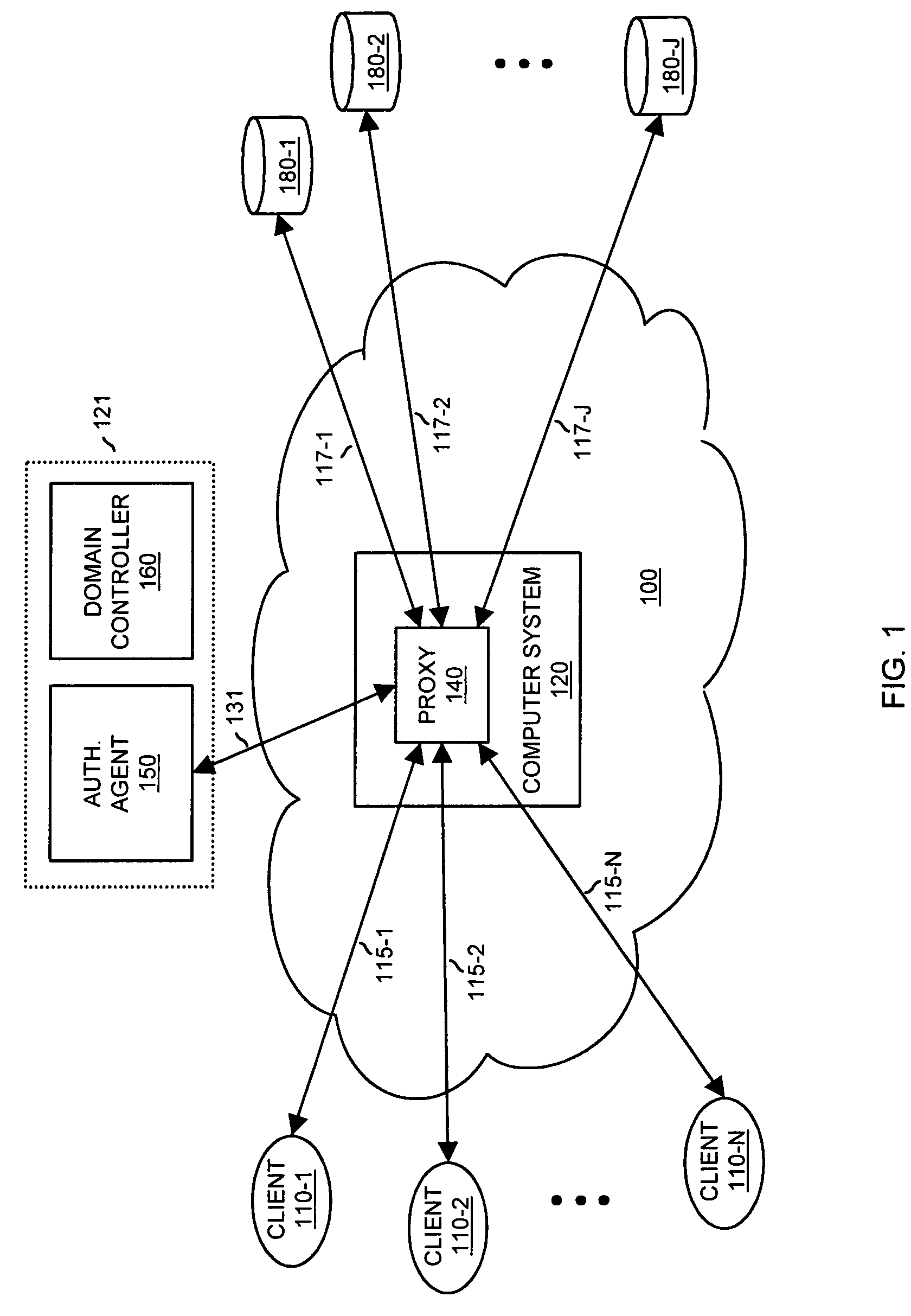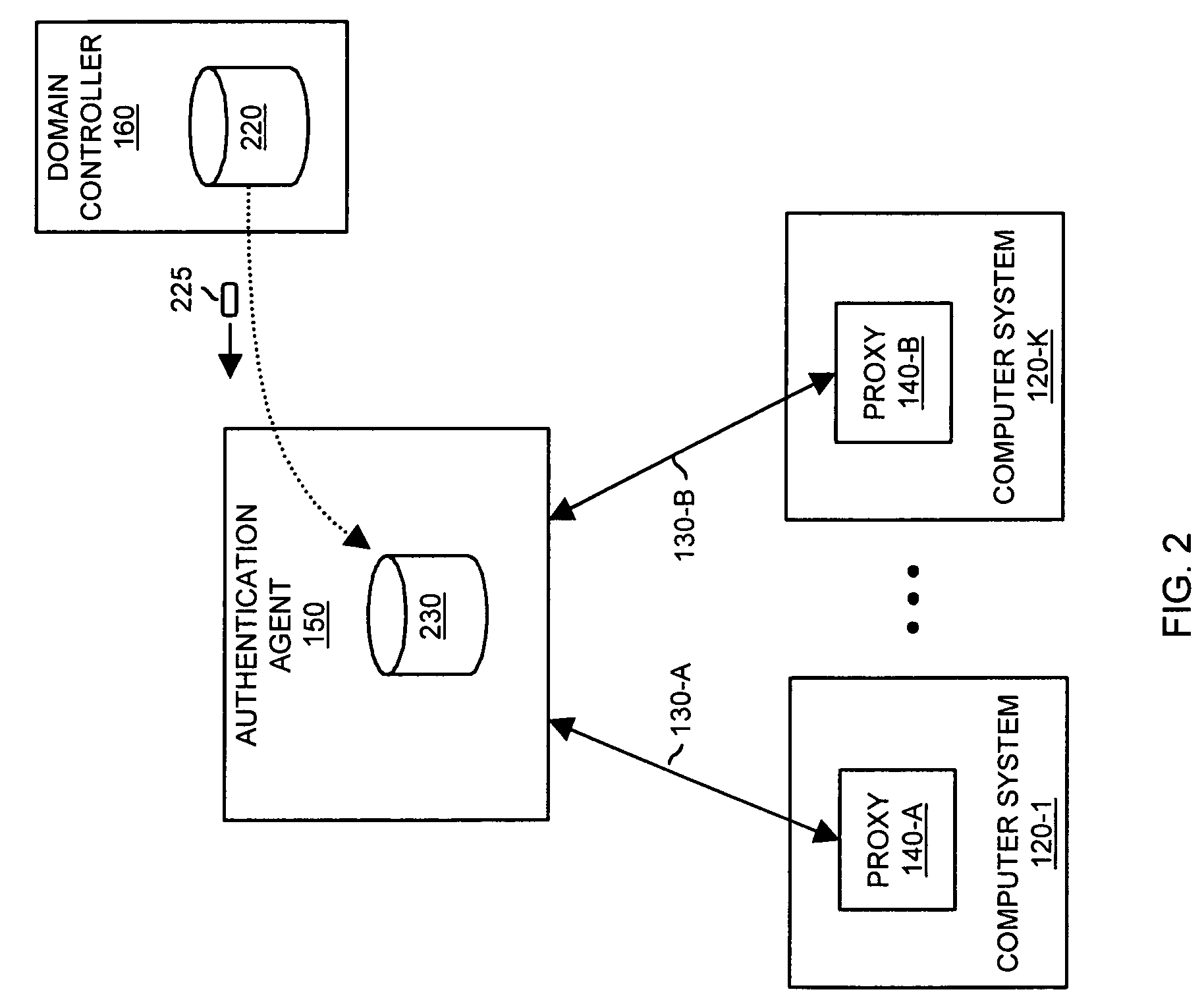Methods and apparatus for implementing authentication
- Summary
- Abstract
- Description
- Claims
- Application Information
AI Technical Summary
Benefits of technology
Problems solved by technology
Method used
Image
Examples
Embodiment Construction
According to embodiments herein, at least one proxy (e.g., a switch) resides in a respective network environment between one or more clients and multiple servers. One purpose of the proxy (or multiple proxies as the case may be) is to provide the clients a unified view of a distributed file system having respective data stored amongst multiple remote and disparate storage locations over a network. The proxy can manage the distributed file system. Another purpose of the proxy is to enable the clients to retrieve data stored at the multiple servers. As discussed above, according to conventional methods, a client communicates directly with a server that authenticates the client for purposes of enabling the client to access data in the server. Adding the proxy according to embodiments herein requires providing a different authentication procedure to authenticate clients. However, use of the proxy eliminates a need for the client to directly communicate and establish links with multiple ...
PUM
 Login to View More
Login to View More Abstract
Description
Claims
Application Information
 Login to View More
Login to View More - R&D
- Intellectual Property
- Life Sciences
- Materials
- Tech Scout
- Unparalleled Data Quality
- Higher Quality Content
- 60% Fewer Hallucinations
Browse by: Latest US Patents, China's latest patents, Technical Efficacy Thesaurus, Application Domain, Technology Topic, Popular Technical Reports.
© 2025 PatSnap. All rights reserved.Legal|Privacy policy|Modern Slavery Act Transparency Statement|Sitemap|About US| Contact US: help@patsnap.com



